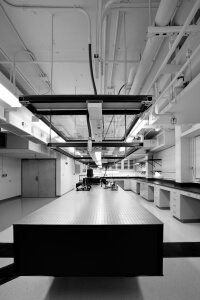Understanding the Psychological Value of Space
August 24, 2015The look and layout of a building’s interior combine to create the psychological feeling you take away from the space. People naturally gravitate toward spaces that make them feel comfortable and calm, while disliking time spent in places that evoke feelings of anxiety or stress. Thus, modern architecture has found a new focus in developing interior spaces and designs that cultivate positive feelings and moods.
Survival versus Wellbeing
The feelings your environment evokes have a profound impact on your mental and physical wellbeing. According to numerous biological studies, spaces that more closely mimic the natural environment support not only increased productivity and function, but improved energy and mood as well. Industrial building design, which is a far cry from a natural, organic environment, can thus have a negative impact on mood, energy levels, concentration, and even physical health, all by prompting a negative psychological impression. Building elements that may cause negative reactions include dark spaces with small or no windows, bare walls, stark lines, and numerous small, enclosed spaces.
Organic Building Design
To improve psychological and physical wellbeing, the design of a building should promote positive feelings, interactions, and activities. Thus, architecture should provide the means to socialize, relax, and connect with the local environment readily and easily. Organic architectural elements used in modern buildings to achieve these goals include large windows and skylights, open floor plans, curved lines and spaces, and natural materials or decorative elements. Many of these elements are being used in a signature Sears Gerbo Architecture project currently under construction in the Philippines. Analog Devices Philippines, Inc.’s new Asian Design Center employs abundant daylighting, open planning, interaction zones, and collaboration spaces. The new building’s vibrant color palette is a departure from ADPI’s manufacturing cleanrooms. Where these elements cannot be utilized, tools such as time-sensitive fiber optic lighting, artificial foliage, and full-spectrum lighting can mimic the characteristics of a natural environment, even in an enclosed or smaller space.
At Sears Gerbo Architecture, we can help you design an organic, positive space for greater productivity and reduced environmental impact. We invite you to explore our architectural portfolio when you visit us online, or call (520) 722-5079 to reach an experienced architect in Tucson.

